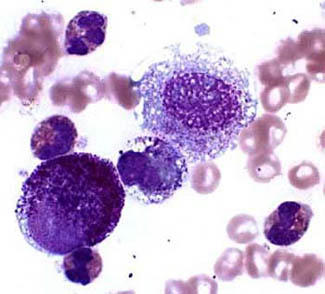 Mast Cell Tumours are aggressive skin cancers and common in dogs. They can look like anything: a patch of dry skin, a raised red itchy area, a wart or a lump.
Mast Cell Tumours are aggressive skin cancers and common in dogs. They can look like anything: a patch of dry skin, a raised red itchy area, a wart or a lump.
Boxers and Staffordshire Bull Terriers have a higher than average risk of Mast Cell Tumours. Other breeds affected include the Bull Terrier, English Bulldog and Sharpei but we see Mast Cell Tumours in all breeds.
Mast Cell Tumours release chemicals randomly, causing local redness, itch and swelling that comes and goes.
To diagnose a Mast Cell Tumour we take a sample of cells, stain them and examine them under the microscope. Most Mast Cell Tumours contain characteristic granules that are easily recognised. If we have any doubts we recommend removal anyway.
The lesion is removed with a wide excision because Mast Cell Tumours send out long microscopic fingers into the surrounding tissue. It is sent to the pathologist who confirms the diagnosis, makes sure we have removed it all and grades it.
The grade of the tumour reflects how malignant the tumour is. A low grade tumour is unlikely to have spread and, as long as the entire tumour has been removed, is unlikely to recur.
About 25% of all Mast Cell Tumours are higher grade. They invade locally and can spread. Without supplementary chemotherapy, the mean survival time is 18 weeks.
Chemotherapy is effective and median survival times are good.
